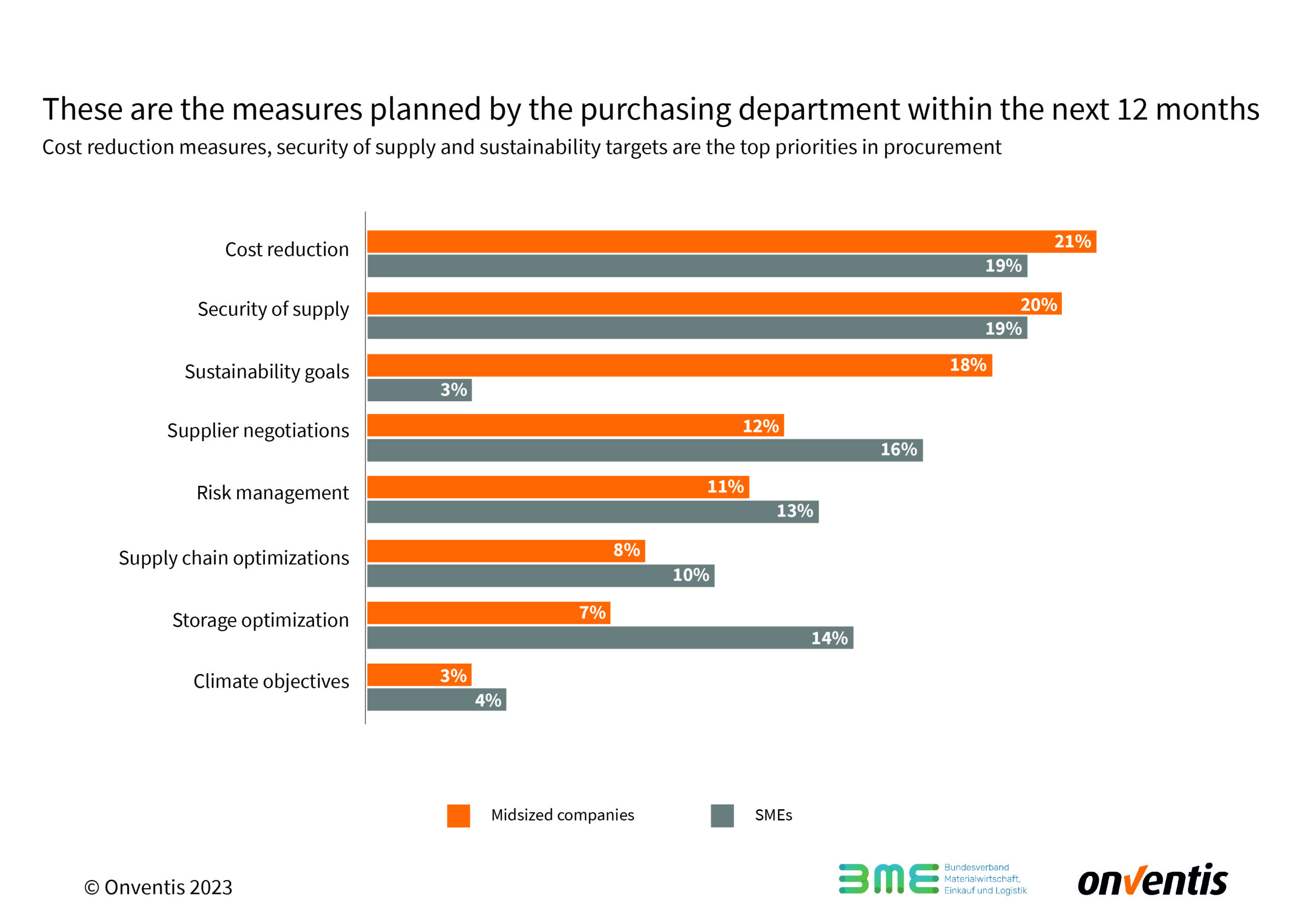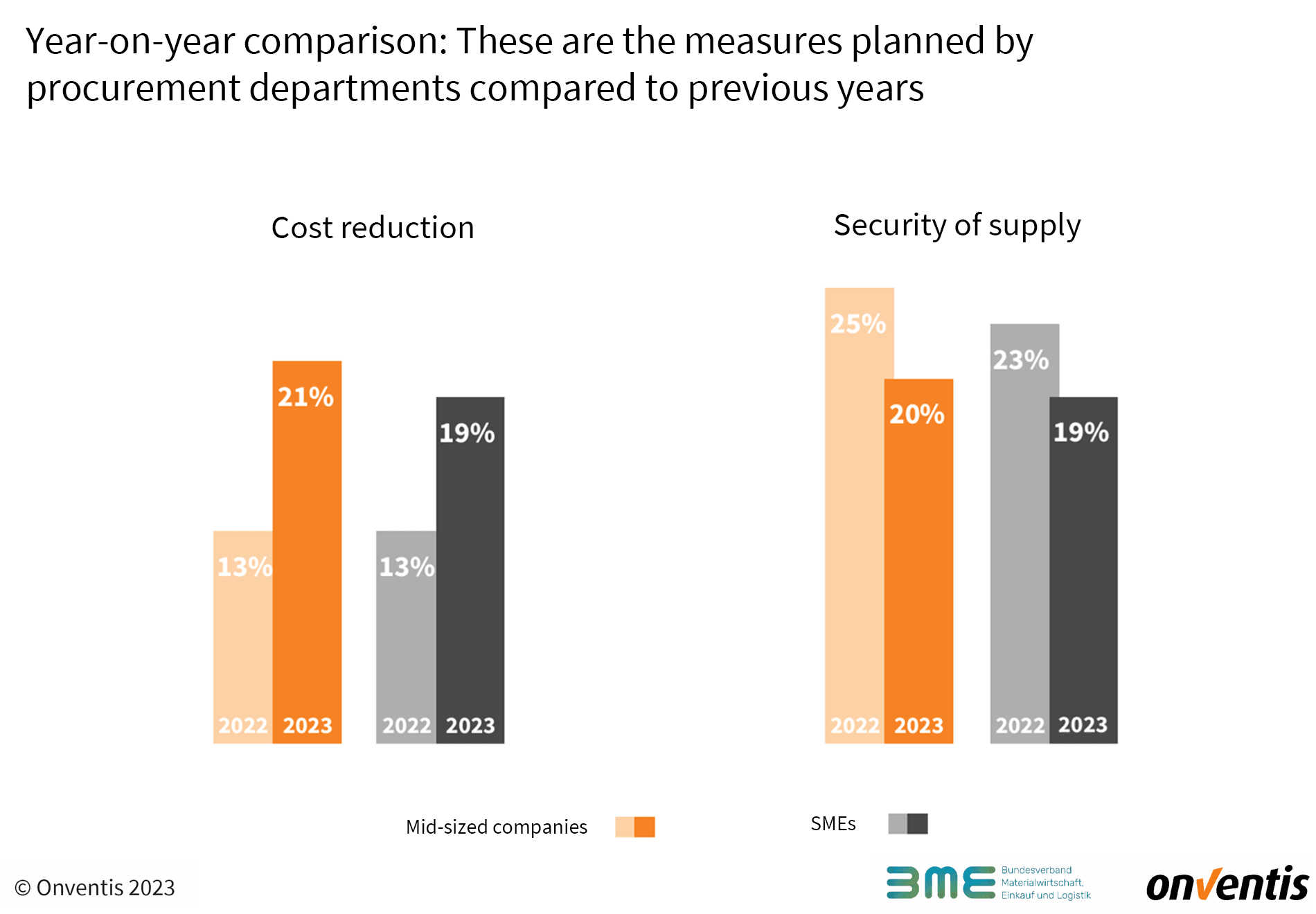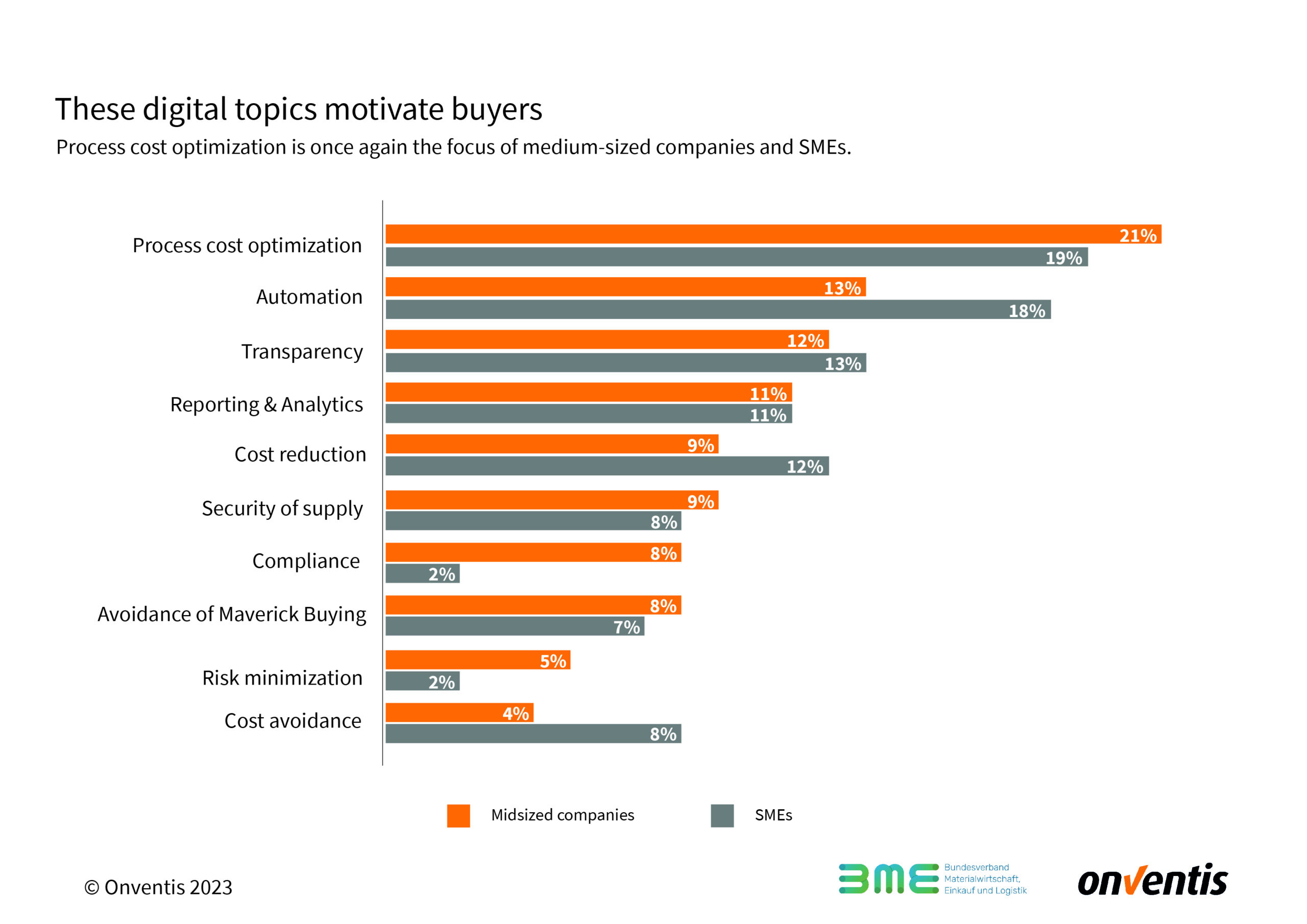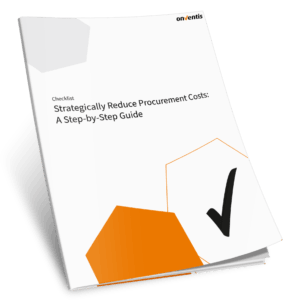Reduce Procurement Costs: a Change of Focus from Security of Supply to Cost Awareness
Cost reduction is a perennial issue in business, especially for SMEs. Our latest study shows a remarkable trend: after years of focusing on the security of supply, SMEs are now focusing on reducing procurement costs. This blog sheds light on why this change in focus is taking place and how companies can effectively reduce their costs.

Reduce Procurement Costs: a Change of Focus from Security of Supply to Cost Awareness
Cost reduction is a perennial issue in business, especially for SMEs. Our latest study (available in German) shows a remarkable trend: after years of focusing on the security of supply, SMEs are now focusing on reducing procurement costs. This blog sheds light on why this change in focus is taking place and how companies can effectively reduce their costs.
Security of supply vs. cost reduction: a change in trend
Recently, security of supply was seen as the primary goal in procurement, as revealed by our annual study on the status quo of procurement and the tension between digitalization activities and other challenges. The study provides an up-to-date picture of the purchasing agenda in SMEs, looks at the tools used, and identifies weaknesses and, thus, potential for optimizing procurement.
Current developments show a change in purchasing priorities: for the coming year, purchasing departments are aiming to significantly reduce procurement costs. A comparison of the annual data illustrates this change in trend. While the focus used to be on ensuring the security of supply, the focus is now increasingly on cost-saving measures.


There may be various reasons for this change in trend:
- Global economic challenges: The trend towards value maximization and strategic partnership with suppliers remains important. However, high procurement costs due to rising commodity prices, supply chain uncertainties, and the pressure to stay competitive have shifted the focus back to cost control.
- Market and economic developments: After years of external factors such as global supply chain disruptions or political uncertainties, companies are now experiencing a more stable market environment. This allows them to focus on internal optimization and cost efficiency.
- Increased competitive pressure: In a globalized market, companies must rethink their cost structure and look for savings to remain competitive, especially in purchasing.
Shortcomings in procurement: a gateway to savings
In the business world, the importance of procurement is often underestimated, even though it accounts for a significant proportion of total costs in many companies. These costs include direct expenditure on raw materials and goods and indirect procurement costs such as transportation, warehousing, and administration. Optimizing procurement processes can have far-reaching effects on a company’s profitability, as efficiency improvements directly impact the cost structure.
Outdated, decentralized, inconsistent processes, combined with a lack of planning, often unnecessarily drive-up purchasing costs. Targeted procurement cost reduction strategies can save money and strengthen competitiveness and market position. Optimizing procurement processes in this way increases profit margins and contributes to the company’s overall profitability.
The potential for savings resulting from the direct connection between purchasing and suppliers and markets is particularly significant. Purchasing has the opportunity to use price leverage. Even small savings in purchasing prices can considerably impact the company’s results due to the large volume of goods procured.
In addition, procurement contributes immensely to the company’s value chain. A well-thought-out optimization of the procurement chain reduces costs and improves the efficiency and effectiveness of the entire value chain. This makes it clear that the procurement function is key to a company’s success. Therefore, a strategic and efficient design of procurement processes is essential to achieve sustainable competitive advantages and secure long-term profitability.
Utilizing digitalization to reduce procurement costs
Medium-sized companies can achieve significant cost savings and efficiency gains through digital technologies. In the area of procurement, digitalization offers the opportunity to gain decisive competitive advantages. Our latest study confirms this finding: the main drivers of digitalization in procurement – process cost optimization, automation, and increased transparency – are geared towards minimizing procurement costs. These objectives have proven to be central and paramount in digital transformation.

This development emphasizes the importance of pursuing a flexible and future-oriented strategy to reduce procurement costs and ensure the company’s permanent success. We have developed a strategy that aims precisely to realize this success for your company.

It is designed to help companies realize short-term cost savings and achieve long-term efficiency gains. The strategic reduction of procurement costs goes beyond purely financial aspects – promoting innovation and sustainability and creating long-term, valuable partnerships.
Optimizing purchasing and thus reducing procurement costs is not a one-off project but a continuous process that requires constant adaptation and improvement. Companies that invest in digital technologies and adapt their processes accordingly can reduce procurement costs and improve their business processes, thus securing a decisive competitive advantage.
Weitere BlogsMore BlogsMeer blogs




